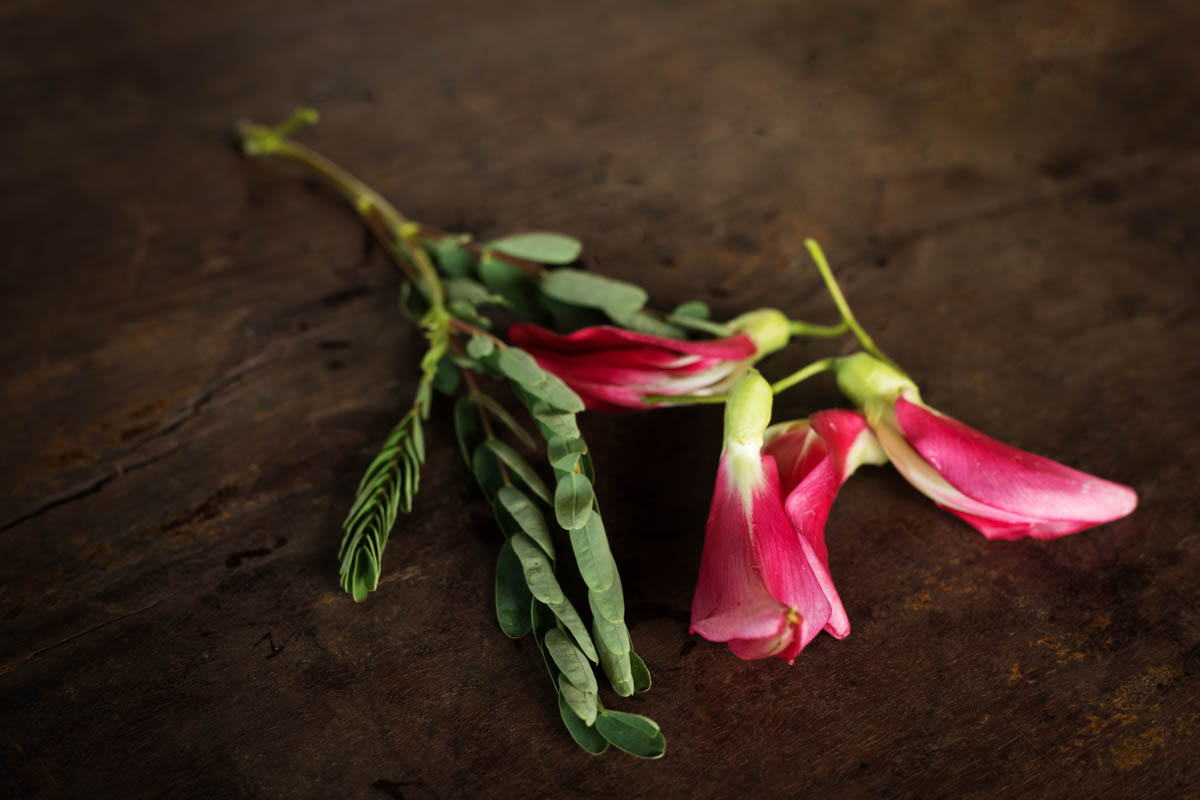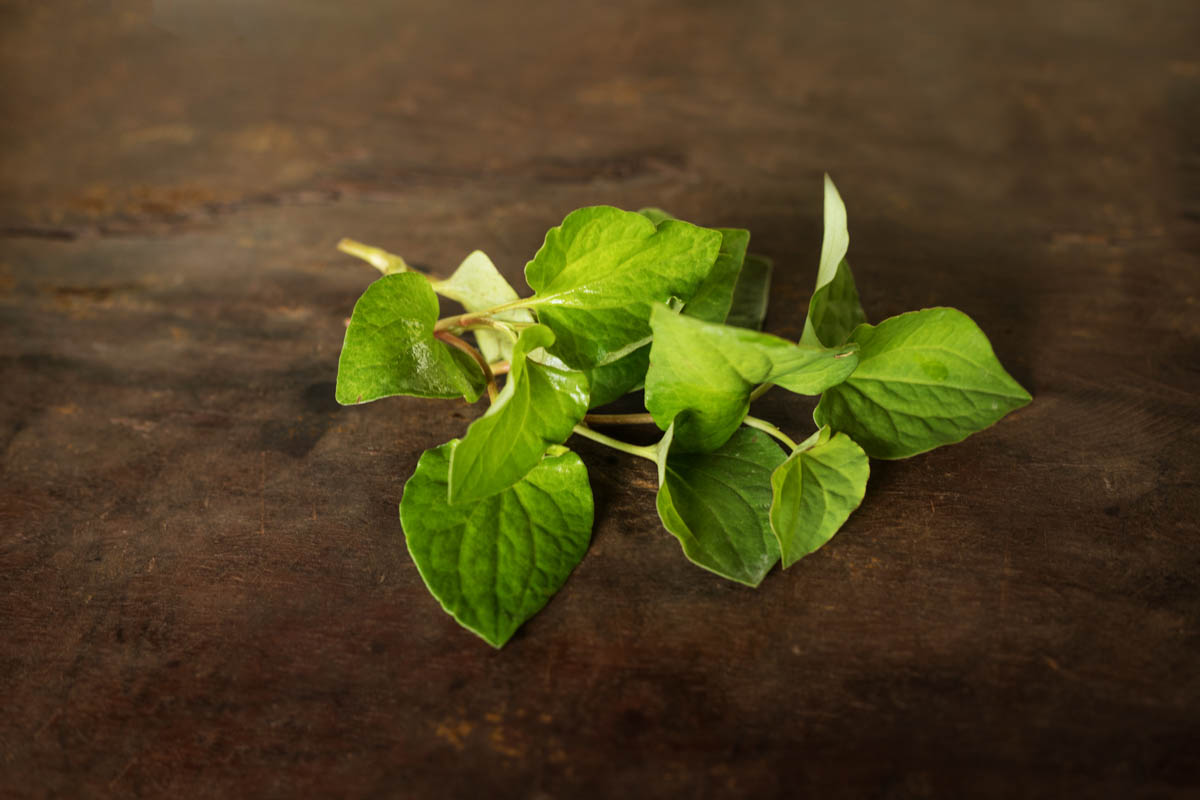
Herbs are an omnipresent ingredient in Khmer cuisine whether they are used raw, to give a flavor or just as a garnish. Many have been using in traditional medicine in many countries of South-East Asia. We spent some time with Chef Mongkol (he grows many of these herbs in his garden) who explain us how he was using herbs at Changkan Khmer for his recipes. If you want to experiment with these herbs why not join one of our group or private cooking class in Siem Reap.
Rice paddy herb
This herb can be found growing in flooded rice paddies hence its name. It is also grown more conveniently in garden as done by Chef Mongkol. It is added to Khmer soups to give a lemony taste.

Rice paddy herb (local name : ma om, latin: Limnophila aromatica)
Asian Coriander
It is used by locals when they eat some small snacks like Pong Tea Kon or baby duck egg. It is a herb with a strong taste so it si not often used alone in Cambodia dishes. Chef Mongkol uses asian coriander in soup and along with basil.

Asian Coriander (local name : chee xanghum, )
Saw leaf
Saw leaf, also know as long coriander has a much stronger taste than the latter. It is used extensively in all south East Asia cuisine in soups and also in salads.

Saw leaf (local name: Chee Bonla. Scientific name: Eryngium foetidum )
Flamingo Bill
Also known as the hummingbird tree, it is called by locals Angkadei. This fast-growing tree has beautiful pendant flowers which are used in some Cambodian soup recipe. The leaves have medicinal properties and have been used for thousand of years in Ayurveda medicine.

Flamengo Bill leaves and flowers (local name: angkea dei. Scientific name: Sesbania grandiflora )
Water Lily Stems
If you stroll local markets in Siem Reap, you will probably stumble upon these stacks of strange pinkish long tube. There are stems for water lily and used in Cambodian cuisine in salads or soup. The flower of the water lily is not comestible but can be used for decoration purpose.

Water lily stems (local name: prolet. Scientific name: Nymphaeaceae )
Water Hyacinth Flowers
You will see these beautiful pink flowers in some of the Siem Reap market. Chef Mongkol uses them in sour soup and also with traditional fresh noodles mixed with other fresh vegetables. They can be used a dip with Teuk Kreung (Asian Mackerel Vegetable Dip Sauce).

Water Hyacinth flowers (local name: . Scientific name: Eichhornia crassipes )
Fishwort
Also known as fish mint or heart leaf (because of the shape of its leaves), this herb is not so popular in Khmer cuisine as its taste can be unpleasant (hence the name of fish mint).

Fish wort leaves (local name: Chee poel trey. Scientific name:Houttuynia cordata)
Kaffir lime leaves
Crushed Kaffir lime leaves release an intense citrus flagrance.They are used in Thai cuisine in the famous Tom Yum soup. The zest of the fruit can be used in soup and curries as well. The fruit itself is used as traditional medicine rather than in juice as it is very sour.

Kaffir fruit and leaves (local name: Slirk Krote Sirk. Scientific name:Citrus hystrix)
Water Spinach
Water spinach is more commonly known in Asia as morning glory and grows naturally in waterways.The stems are eaten as vegetable often stir fried with some chilies.

Water Spinash (local name: Tro kuon . Scientific name:Ipomoea aquatica)
Lemongrass
Possibly the most used herb in Khmer cuisine: the stalks can be used slightly crushed to release flavors and tied up in soups. It is used chopped in salad or in some chicken recipe. It is an important ingredient of the amok paste (called Kreung). We are also creating lemongrass drinking straws for our cocktails and mocktails.

Moringa
Moringa also called the miracle tree is a fast-growing tree famous for its health benefits. Though it is not very commonly used in Cambodia cuisine, Chef Mongkol is adding fresh moringa leaves in clear soups.

Fresh moringa leaves (local name: M rum . Scientific name:Moringa Oleifera
Noni leaves
Noni is a fruit-bearing tree which is quite known for its health benefits. Noni leaves are used in Cambodia for the famous amok recipe so it is also known as amok leaves. It can be also used as edible wrap

Noni leaves (local name: slok gno . Scientific name:Morinda citrifolia)
